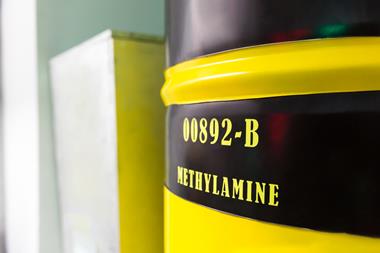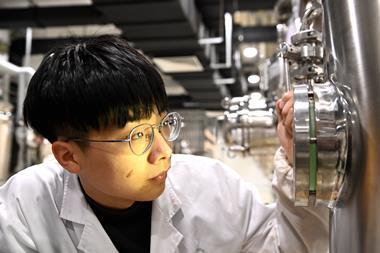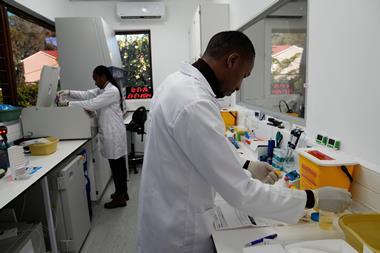Derek Lowe squares up to the challenge of biologics
Something odd happened to small-molecule drug discovery people over the last five to 10 years: they stopped being the ones responsible for many of the best-selling drugs. Year by year, the number of biological products near the top of the charts has been growing. Traditional medicinal chemists may be wondering about just what this means, since they’re used to being responsible for all the profits (we’re also responsible for a lot of the losses, but we’ll skip over that painful subject for now). Is chemistry still valuable, or are we being gradually replaced by biologists and bacteria?
Relax. There are several good reasons for the trend, but synthetic organic chemistry isn’t headed for the waste bin any time soon. But we can’t afford to ignore this change, either, because the biotech products have some advantages that we’re hard-pressed to match. For one thing, compared to small molecules, biologics can affect human drug targets that we chemists can’t yet touch. After all, if you’re looking for something that acts exactly like erythropoietin or growth hormone, you can’t start from a better spot than the original protein. These things can bind to their targets in multivalent modes that small molecules may never be able to mimic. We probably only cover a small fraction of available pharmacological space, but the fact remains that not everything is subject to alteration by small-molecule binding sites.
That would be reason enough to justify protein therapeutics, but there’s an added business and regulatory difference. Only now, many years after the first blockbuster drugs in the category, is the issue of generic competition being seriously addressed. The EU seems to be ahead of the FDA on this, but either way, most of the top biologic products don’t look to face price-cutting generic competition any time soon. Proving the consistency of your own batches of these things is enough of a problem; proving that two differently sourced ones therapeutically match each other is, as they say, nontrivial. For now, in most cases, the proteinaceous profits will keep rolling in well past the patent expiration dates that would have felled traditional drugs.
Of course, there are serious disadvantages to using proteins, such as the almost unavoidable loss of any oral dosing route. If anyone ever figures a general way around that problem, then we really will see a revolution. The gastrointestinal tract is, among other things, a huge shredder for large proteins, and what happens to them in there makes what happens to small molecules look mild by comparison. Even by injection, though, their pharmacokinetics can be difficult, since they can run into the built-in clearance mechanisms which keep the endogenous protein in check. And there’s always cost of goods: molecular biology and industrial fermentation are wonderful things, but on large scale they take on some of the characteristics of sorcery. Optimising an industrial biologic process (and making sure that it stays optimised) can be one of the harder challenges in the industry.
So the products of the med-chem labs will probably have the cost and dosing edges working for them for a long time yet. To make the most of our of our expertise, though, we’ll need to target all the things that the proteins might not be able to do. The first thing, obviously enough, is to make sure that we’re exploiting all the real small molecule binding opportunities we can find. Even such well-studied areas as G-protein coupled receptors have secrets yet to be revealed. Ion channels surely have a tremendous amount of untapped drug discovery potential as well. Moving out of the cell membrane, there’s the whole topic of allosteric regulation of enzymes. Not all sites will be suitable for small organic compounds, but lack of understanding and lack of screening tools have kept us from finding many of the ones that are. There are untold numbers of more difficult areas, such as protein-protein interactions, but we should perhaps play to our strengths first.
Eventually, we might end up moving past the current era of biomolecules in one pile and small molecules in another. We don’t have to try to put each other out of business - there’s no reason why the two can’t be usefully combined. A great deal of work is going into such ideas: using the biologics as targeted delivery agents, for example, or producing a dual-acting therapy that takes advantage of the power of both components. There are enough medical needs in the world for all of these. Let’s just hope that, in the end, there are enough therapies (of whatever kind) to meet them.
Derek Lowe is a medicinal chemist working in preclinical drug discovery in the US












No comments yet